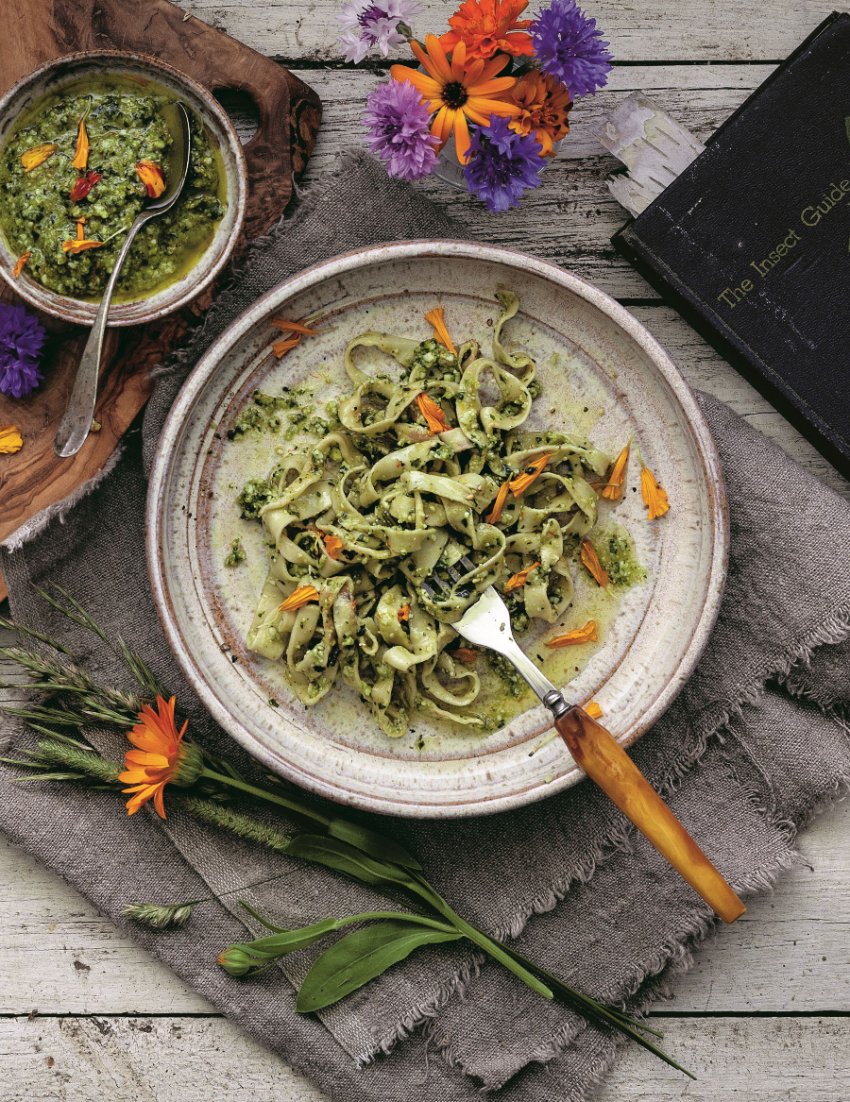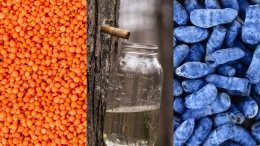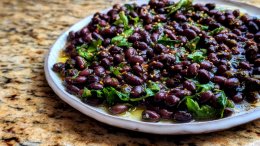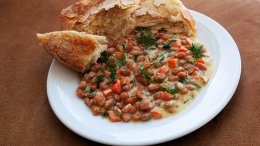Making pasta with flowers? Well, we never!
While we may have "never", cookbook author Nikki Fotheringham certainly has by way of one of the (many) summery recipes in her cookbook Taste Buds: A Field Guide to Cooking and Baking with Flowers. The book celebrates the inclusion of edible florals into all types of recipes, and seeing as it's current peak summer, there certainly is no time like the present.
"Be warned: once you make fresh pasta, it’s really difficult to go back to store-bought. It’s incredibly easy, extremely satisfying and absolutely delicious. This flower pasta in particular is beautiful, and I encourage you to experiment with other edible flower petals. If the petals are large, chop them up or the two layers of pasta won’t stick together," writes author Nikki Fotheringham in the introduction to this interesting recipe in Taste Buds.
Marigold pesto
2 cups (500 ml) fresh basil leaves*
½ cup (125 ml) grated Parmesan cheese
½ cup (125 ml) fresh marigold petals, washed and dried, seeds removed
⅓ cup (75 ml) pine nuts
3 cloves garlic, finely chopped
½ cup (125 ml) extra virgin olive oil
Table salt and freshly ground black pepper, to taste
Meanwhile, to make the pesto, using a food processor fitted with the steel blade, blitz the basil, Parmesan, marigold petals and pine nuts until smooth. With the machine running, add the garlic, slowly drizzle in the oil and then blend for 1 minute. Taste the pesto and add salt and freshly ground black pepper to taste.
Once the water is at a rolling boil, drop your fettucine in. It should only take 1–2 minutes to cook through.
*Author's note: If you prefer, you can swap out 1 cup (250 ml) of the basil for 1 cup (250 ml) of dandelion greens.
Flower pasta

2 cups (500 ml) “00” flour
½ tsp (2 ml) coarse kosher salt 3 large eggs
1½ tsp (7 ml) extra virgin olive oil
½ cup (125 ml) fresh marigold petals, washed and dried, seeds removed (see page 114), plus more for garnish
To make the pasta, on a clean work surface, pile up the flour and salt, and carefully whisk to combine with a fork. Make a well in the center and place the eggs and oil in it. Using a fork, carefully beat the eggs, slowly drawing in flour from the edges until a shaggy dough forms. It’s okay to get stuck in with your hands as soon as the eggs are incorporated if you prefer.
You can do the next step by hand or in a stand mixer.
If you’re using your hands, knead the dough on your work surface until it’s elastic and soft, 8–10 minutes.
If you’re using a stand mixer, fit it with a dough hook and mix the dough on medium speed until elastic and smooth, about 3 minutes.
Turn out the dough, cover it with plastic wrap and leave it to rest on the countertop at room temperature for 30 minutes.
Divide the dough into 2 evenly sized pieces, leaving one half in the plastic. Run the first half through your pasta machine, taking care to fold the edges in so the dough comes out in a nice rectangle. Repeat until you have run the pasta through the thinnest setting.
Lay the pasta out on a lightly floured work surface. Sprinkle the marigold petals evenly over the top.
Run the second half of the dough through the pasta machine just like you did with the first piece, going all the way to the thinnest setting. Place this pasta rectangle on top of the first one and press down gently. Run the double layer of pasta through the machine on a medium speed one last time. Now use your cutting attachment to make fettucine. Flour the pasta well so it doesn’t stick when you cook it.
Fill a large pot with water as salty as the sea and bring it to a boil over high heat.
Once the water is at a rolling boil, drop your fettucine in. It should only take 1–2 minutes to cook through.
For serving
Serve the pasta hot with a drizzle of pesto and a couple of marigold petals to garnish.
Enjoy!
- Yield:
- Serves 4








